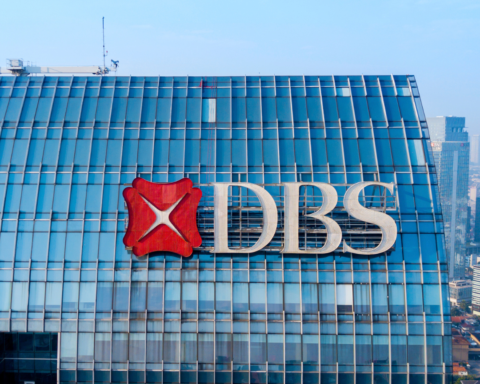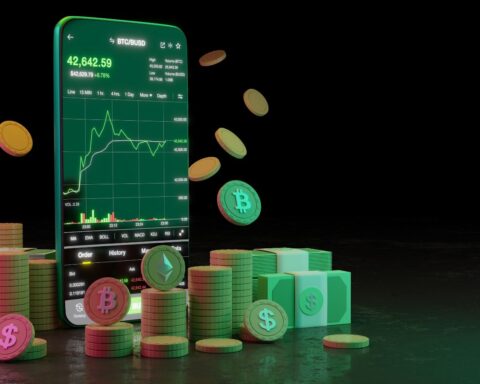A monthly column by Sebastian Markowsky, CSO at Coinsource exclusive for Finsight.news.
The argument in favor of Bitcoin remains strong. Many unfamiliar with crypto markets may be surprised by the current status of the popular cryptocurrency, with the expectation that Bitcoin would have reached record-breaking highs over the course of the final quarter of 2021, and would have progressed further in its cycle phase towards a blow-off top.
The fundamentals remain relatively unchanged with all-time lows of liquidity on exchanges, with no wider FOMO or retail activity. It appears that most of the price change is driven by institutional activity, with most of this consisting of coins moving from younger addresses to net accumulating wallets over the course of several months, or the so-called “Diamondhands” gathering assets.
Recent turmoil in the stock market has had an impact on Bitcoin, and will likely determine its fate in the short term. Worrying signs of defaults in China, an unclear impact on the global investment world and economy, and record pace divestment of executive shareholders in some of the largest stocks are all poor signs. However, the pull from the tech sector has already sent Bitcoin into a correction. The overall narrative has been that investors sought to divest from risky assets such as Bitcoin, however, in reality, it would appear that Bitcoin has been the target asset of liquidation because of its superior liquidation characteristics, in order to fund activities in an otherwise challenging stock market. The effect on Bitcoin in a real crash scenario may be comparable to the March 2020 correction, which was sharp but short-lived, and marked the start of a strong and long-standing growth period ever since.
The future of Bitcoin remains bullish: The rate of adoption is the fastest of any technology ever, and the number of Bitcoin holders is expected to grow from around 200 million in 2021 to over one billion by 2025 at the latest. The hash rate has recovered from the lows that arose from China’s mining ban, leaving Bitcoin as an incredibly decentralized protocol on the mining layer, leading to Bitcoin moving away from subsidized coal energy.
On a macro level, excessive money printing has sparked inflation across the world. In the US, inflation has reached a record-breaking 6.8%. It is important to note however that interest rates 40 years ago were around 9%, while today the interest rate is 0%. The spread of inflation versus interest rate many times more than what it used to be. This may lead to severe misallocation of funds in the investment world.
In contrast, Bitcoin’s inflation rate is already much lower than the US inflation rate and after the next halving it is expected to move below 1%. Ultimately then, Bitcoin will become the hardest currency in the world. The hardest currency has always attracted the majority of funds in the world in human history, which makes one believe it will be the same with Bitcoin. This is a “Winner Takes It All” market, so the case for Bitcoin to become the global monetary network is still pretty much intact.
As more and more institutional investors are entering the space, more products are being created and launched to drive adoption even further. Large tech players are working to integrate Bitcoin offerings into their platform and act as a layer 2 protocol, aiming to bridge some of the shortcomings of Bitcoin on speed and perceived settlement time. With more nation-states rumored and expected to follow El Salvador in adopting Bitcoin as legal tender, the race for Bitcoin is on to further cannibalize central bank territory.
Given the state of the Bitcoin market the overall expectation is that this bull run will continue into 2022, with Bitcoin peaking in the first half of the year. There are many additional factors that may have a material effect on the Bitcoin price in the coming months, where when the primary effect on Bitcoin is done, there will be spill-over effects on key altcoins, which may drag into 2022. There will be a material correction depending on how strong the remaining uptick will last, but the correction will not be evenly distributed. Whereas Bitcoin will traditionally correct less than altcoins, it will be mostly altcoins that show harshest dives.
Over the course of 2021 Bitcoin has established itself as an asset class with, so far, comparably little institutional and retail adoption. However, it is still very early days in the Bitcoin lifecycle. Comparing inflation and other currencies it is fair to assume that in the medium to long-term, Bitcoin will potentially appreciate more than any other currency, which may further bolster its perception as a store of value, regardless of short-term price volatility.
Peter Thiel made a very interesting comment that describes the situation well. In a recent interview, he said that he feels he is underinvested in Bitcoin as he thought “the secret was already known by everybody”. Presumably, it is not known by everybody, and there is a very long way to go. Not being invested remains the largest risk, and the assets themselves are becoming less risky from an institutional standpoint. The trick is to have an investment horizon of several years.













